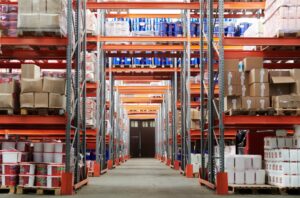The barcode, also called barcode, is a traceability system used by companies in all sectors.
In this article, we will explain precisely what these devices are used for, how they work and their usefulness in the context of a company.
Barcode Definition
The barcode makes it possible to visualize data, readable thanks to a machine. This data is materialized by the bars, which are the graphic transcription of figures. This symbol therefore allows the automatic entry of data each time the scanned article is read.
The code is materialized by a series of 13 digits and is called Global Trade Item Number (GTIN). Barcodes are present all around us, on each of the products we buy in stores: food products, clothing, electronic products, etc.
The origins of the barcode
In 1952, the first patent concerning barcodes was filed by two Americans: Norman Joseph Woodland and Bernard Silver. These two engineers were looking for a solution to automate the registration of manufacturers’ products. To do this, the inventors had the idea of combining the sound system of films as well as the morse code.
Thus, to translate these black bars and white spaces of information, the code must be scanned with a light. It was only 20 years of technological evolution later that a technology could be developed and exploited.
It was in the early 1970s that the usefulness of the barcode took on its full meaning. These are then used in supermarkets in order to automate checkout work. This is the task that we all still know them today.
For the record, the first product with a barcode and to be scanned at the checkout is a packet of Wrigley’s brand chewing gum. It happened in 1974 in Ohio.
Ease of use is what explains the success of the barcode and its survival over time. This can also be explained by the low production cost it represents, its universality, the time saving it represents, as well as its reliability.
What is a barcode used for?
The GTIN code translated into a barcode serves above all to identify a product in circulation in the economy. Thanks to this unique codification, it is possible to know everything about a product: its composition, its country of origin, its manufacturer, etc.
This is not the only utility of the barcode that has been able to stand out among merchants, fulfilling a number of tasks. This has made it essential for good business management, in particular.
Identification is the first step in a traceability system, automatic identification then makes it possible to know everything about a product, to follow and manage the flows as well as the stocks of a company.
What are the advantages of the barcode?
The barcode is a current economic and commercial industry standard. This comes from the number of advantages that this type of identification offers:
Saving time for the consumer
When it hit the market, the barcode allowed consumers to spend less time at the checkout thanks to the reduction of queues. Attendance at supermarkets then exploded, allowing the volume of sales to increase, the consequence of which was lower prices for the end consumer.
Supermarkets, offering a large quantity of products for sale, have seen themselves benefited by the appearance and use of barcodes. Small merchants, distributing a smaller quantity of products, initially did not favor these codes, because it was not profitable for them in the short term. Supermarkets thus experienced a particular boom at this time, encouraging consumers to visit supermarkets, saving them time.
In addition to being streamlined, checkout is also made more reliable, since the consumer gains in confidence.
Better management of product flows and stocks
Whether on a small or large scale, barcoding is the most efficient and reliable method to manage inventory. Indeed, for optimal inventory management, the barcode is not an option.
The use of this method allows automated, very precise and fast (even instantaneous) inventory tracking. Similarly, when preparing orders and creating attached documents, the barcode saves valuable time.
This then provides increased visibility on inventory, specifying adjustments when necessary. Products are organized and tracked automatically, eliminating manual entry errors. Likewise for new references, it has become easier to manage a continuous flow of new products.
Restocking is also done more quickly and diversification of supply is easier, which was previously physically impossible.
Product traceability
For merchants buying their products from different vendors, it helps to know what products they are sourcing. Moreover, in today’s era, marked by a general distrust of consumers towards manufacturers, barcodes can help to have control over what they buy.
The fight against fraud
Each time the product code is passed through the checkout, it is directly and automatically recorded as a product sold. Such a system makes it possible to avoid potential embezzlement.
Loyalty
In addition to all the advantages already mentioned, the arrival of the barcode in commerce has enabled the development and popularization of loyalty cards. These have led to the introduction of the use of statistical data analyzing consumer preferences.
What are the disadvantages of barcodes?
Although the barcode is a very efficient and beneficial system, it is still foolproof like any other inventory tracking method.
Barcodes can only be read using a specific reader designed for this purpose, which can represent a fairly substantial investment cost for small traders with other priorities.
In addition, the storage of information is still restricted.
What are the different types of barcodes?
There are two types of barcodes:
- One-dimensional (1D) barcodes;
- Two-dimensional (2D) barcodes.
The 1D barcodes are affixed directly to the packaging / packaging of the products. 2D barcodes are referred to as flashcodes or QR codes , Datamatrix, etc.
How to obtain / generate a barcode?
To generate your barcodes , you can use Ruggedtabletpc and its Generator tool.
How to read and scan a barcode?
The barcodes are decipherable thanks to a linear optical reading by laser beam. This means that you have to use a scanner called “shower” in everyday language. Thus, the identification is automatic and instantly generates the taking into account of the price of the article, but also the computerized management of stocks.
Thanks to the numbers written under the barcode, certain information is made available without a code scanner, in particular for the consumer. The most common codes are used all over the world and cover almost all consumer items. As its name suggests, the GTIN 13 code is made up of 13 digits, which designate:
- The first 2 or 3 digits refer to the country of manufacture of the product. For example, after a simple search on Google, you will easily find the country of origin of the product in question. Here are some of them: 000 to 019 USA, 300 to 379 France, 690 to 699 China, 840 to 849 Spain, 893 Vietnam, … It should however be kept in mind that these numbers correspond to the country for which the company is a member of the GS1 system. It is thus not necessarily the country of production that is indicated, but the location of or one of the company’s head offices;
- The following digits correspond to the company prefix assigned by GS1;
- The following numbers correspond to the reference (or part product code) assigned by the owner of the trademark;
- The last digit is a control key that verifies that the barcode is valid.
More and more smartphone applications are being developed and made available with the aim of allowing consumers to scan and read the barcodes of the products they have in their hands. By scanning these codes with their phones, consumers can access additional product information.
For example, the Yuka app rates the quality of food and cosmetics out of 100 to provide health information. The consumer only has to download the application on his phone, and scan. Thanks to this, he can for example know its nutritional qualities: fiber content, salt, sugar, etc.
Finally, this code, which was primarily used by companies looking to optimize their productivity and inventory management, is also used by consumers who can check the composition of the products they buy / can buy at any time.
Where to place a barcode?
To know how to print these codes, you must view your product. Do you want to place your code directly on the product, such as on bottles or jars? Or do you want to place your barcodes on a label, like on textile products?
The label is a classic format, involving the printing of your code in a rectangular format. Depending on the shape and material of the product concerned, you can however innovate and bet on originality by offering staged barcodes.
The use of barcodes in e-commerce
After having long been non-mandatory for E-merchants, the declaration of GTIN code becomes essential to sell online, regardless of the chosen channel.
In the E-commerce sector, especially on marketplaces, having products with a GTIN code is mandatory. This allows you to gain visibility on them.
According to the GS1 organization, 0.35% of GTIN codes are incorrect. If some E-merchants neglect these codes, they nevertheless have an impact on their activity. Indeed, Google and Amazon require the presence of these barcodes in the catalog. If this is not the case, the referencing of the products concerned is downgraded. Conversely, the more information you provide, the better you will be referenced, thus influencing your potential sales. This rule has been applied since May 16, 2016.
This information is particularly relevant when we know that 90% of search traffic comes from Google and that 28% of Internet users search directly for the desired products on the Amazon marketplace. According to Google, listings with a GTIN code have a 40% higher click-through rate, generating 20% more sales.
In addition, if you enter the GTIN code of a product on a marketplace, it provides you with information relating to it. This allows you to flesh out the card with new information and photos, for example, which saves you time and credibility.
Thanks to your quality product catalog as well as customer reviews, marketplaces can recommend your products in complementary sales modules.
Barcodes allow you to manage the different information of your products, their stocks and gain visibility on your distribution channels.



